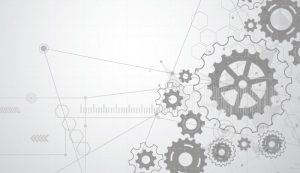The latest projections estimate that the Industry 4.0 market size will reach $210 billion by 2026, a mere four years away. But an even more pivotal shift in manufacturing is already upon us: Industry 5.0. This new era is much more significant than simply integrating cyber-physical equipment into the factory floor. Where Industry 4.0 laid the groundwork for smart, connective technology on the production line (enabling manufacturers to scale more than ever before by identifying and optimizing repeatable processes), Industry 5.0 expands our focus beyond efficiencies of scale to personalization. It’s a larger transformation demanding manufacturers become customer-centric organizations if they aren’t already. With Industry 5.0 we are learning how to create more customized products by refining how humans and machines work together. But as with any transformative strategy, you have to have the right foundation in place, and that means mastering Industry 4.0 to prepare for Industry 5.0.
How manufacturers approach Industry 4.0 will make all the difference in how easy it is to take the next step in evolving to Industry 5.0. With this blog, we aim to clarify what that approach looks like (think holistic—expanding beyond a technology-only focus), how it differs from a traditional product approach, and the critical difference between technology and systems as you adopt a holistic strategy.
What is a holistic systems approach?
Industry 4.0 introduced truly intelligent, connected environments to the manufacturing industry, and with that came a vast web of software, sensors, actuators, and controllers, all keeping the operations running. These powerful devices—often autonomous and collaborative—depend on good, clean data and dynamic integrations to supply the context that keeps them in harmony with each other. In other words, it’s many small systems making up the greater and (hopefully) cohesive system that is your manufacturing operations. This is why taking a holistic systems approach is critical to ensure the risks and complexities of Industry 4.0 become assets as you move into Industry 5.0.
The holistic systems approach aims to deconstruct what is one sizable complex system into smaller sub-systems and models. These can then be used to design and analyze the effectiveness of the larger system and identify any potential gaps. This approach looks at every facet of every system, meaning it will consider the needs and functions of all departments against every sub-system involved. And this isn’t merely IT’s perspective on the systems—it’s a dynamic, all-inclusive analysis of all roles and functions necessary to the organization. It streamlines cross-department redundancies, accounts for unaddressed needs or goals, and improves productivity with greater interdepartmental collaboration.
What’s missing from the old product approach?
In a traditional product-focused organization, the core considerations include the product(s) and end user results concerning said products, such as performance, efficiency, safety, and quality. This is still critical information in a holistic systems approach, but it requires much more to be all-encompassing and competitive in today’s customer-centric market. The demands of today’s customers require more customization and relationship-based data that extends beyond simple product sales data. That’s why a holistic systems approach will also include the following areas missing from a product approach:
— Human-machine interactions
— Ergonomics
— Connectivity of other systems
— Interoperability
— Market dynamics
Technology approach v systems approach
A technology approach—the downfall approach several manufacturers have found themselves taking for Industry 4.0 in the past—is not a pure holistic systems approach. This analysis is simply focused on the stronger, better, faster benefits of individual technologies or new equipment. While certainly a motivating factor in the adoption of any new technology, these motivations alone can hinder a more comprehensive systems approach by limiting the potential scope for these devices and failing to consider their connectivity with one another.
On the other hand, a systems approach gives manufacturers a chance to look at their systems with new eyes and use design thinking to put these new technologies to genuinely transformative uses. Some examples of this include GE Aviation using DfAM to redesign critical fuel nozzle parts in their jet engines for more fuel efficiency, Boeing’s upgraded system that traded in a narrow compartmentalized approach for data analysis from a centralized system for improved QA, and Adient, a seating systems supplier, that uses the data from integrated systems to look for ways to enhance seating products on airplanes for more comfort, innovation, and functionality for passengers. The commonality among all three of these? Systems working together to create a value-add output and in turn providing more opportunities for humans to interact and act on insights from the systems (the core component of Industry 5.0—how machines and people come together).
If you’re ready to take the next step in your digital transformation, be that building an Industry 4.0 foundation or expanding to Industry 5.0, Simplus is there at every step. Reach out to our manufacturing industry-specific experts for firsthand experiences transforming companies into modern, innovative leaders.















0 Comments